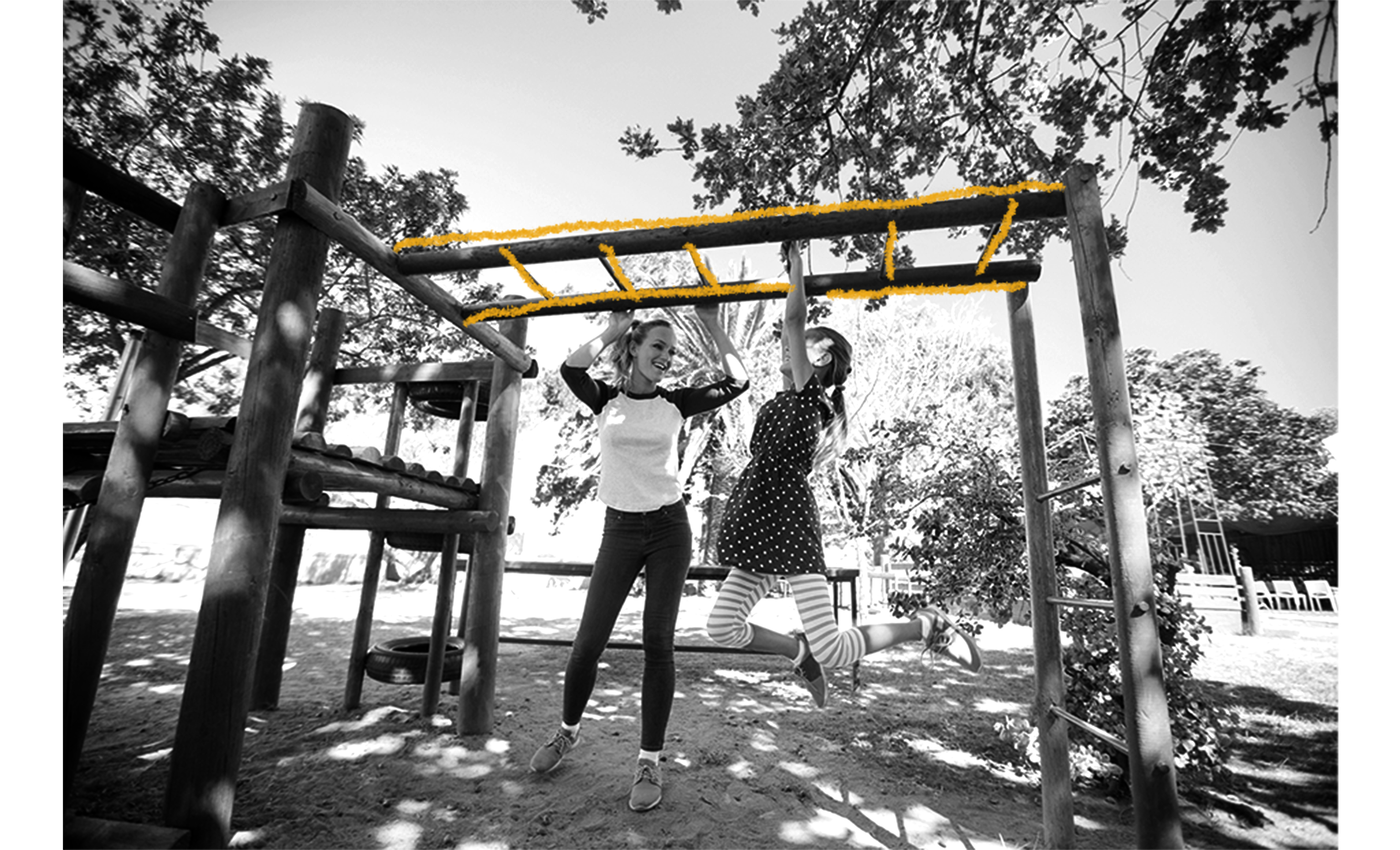Sebastian Hinton, a Chicago patent attorney, is credited with the invention of the jungle gym and filed a patent for it in 1920. He attested that it was “a little dangerous” but that it was designed to harness “the monkey instinct strong in all human beings” by allowing children to climb; the upper layer of bars represented “the forest top” and the structure allowed them to climb in either direction without touching the ground. Hinton’s father, a mathematician who invented the first baseball pitching machine, had created a climbable grid of bamboo sticks while living in Japan. He used it to teach his children geometry and would shout out Cartesian coordinates and then watch while his children raced to the corresponding point. However, Hinton and his siblings also played on the structure for fun. After telling Carleton Washburne, the new school superintendent of Winnetka, about this at a party, the two men joined with educator Rose Alschuler to create a climbing grid. North Shore Country Day School was given the first prototype, but the final iteration of Hinton’s jungle gym was installed at a Horace Mann School, then at Crow Island School on Willow Road. For decades, imposing-looking metal jungle gyms were a fixture of American playgrounds. However, in the mid-1990s, playground materials softened and structural heights were lowered as safety became paramount. It was at this time that most jungle gyms were removed. Today, the first jungle gym is located in the backyard of the Winnetka Historical Society, where children sneak in to play on it. It is possible that redesigned versions of the jungle gym may be coming soon, however, as playground trends are changing and many thought leaders now believe that elements of calculated risk are important to include.

Your go-to guide for weird history facts
Subscribe to the FREE daily email that makes learning about history fun.


